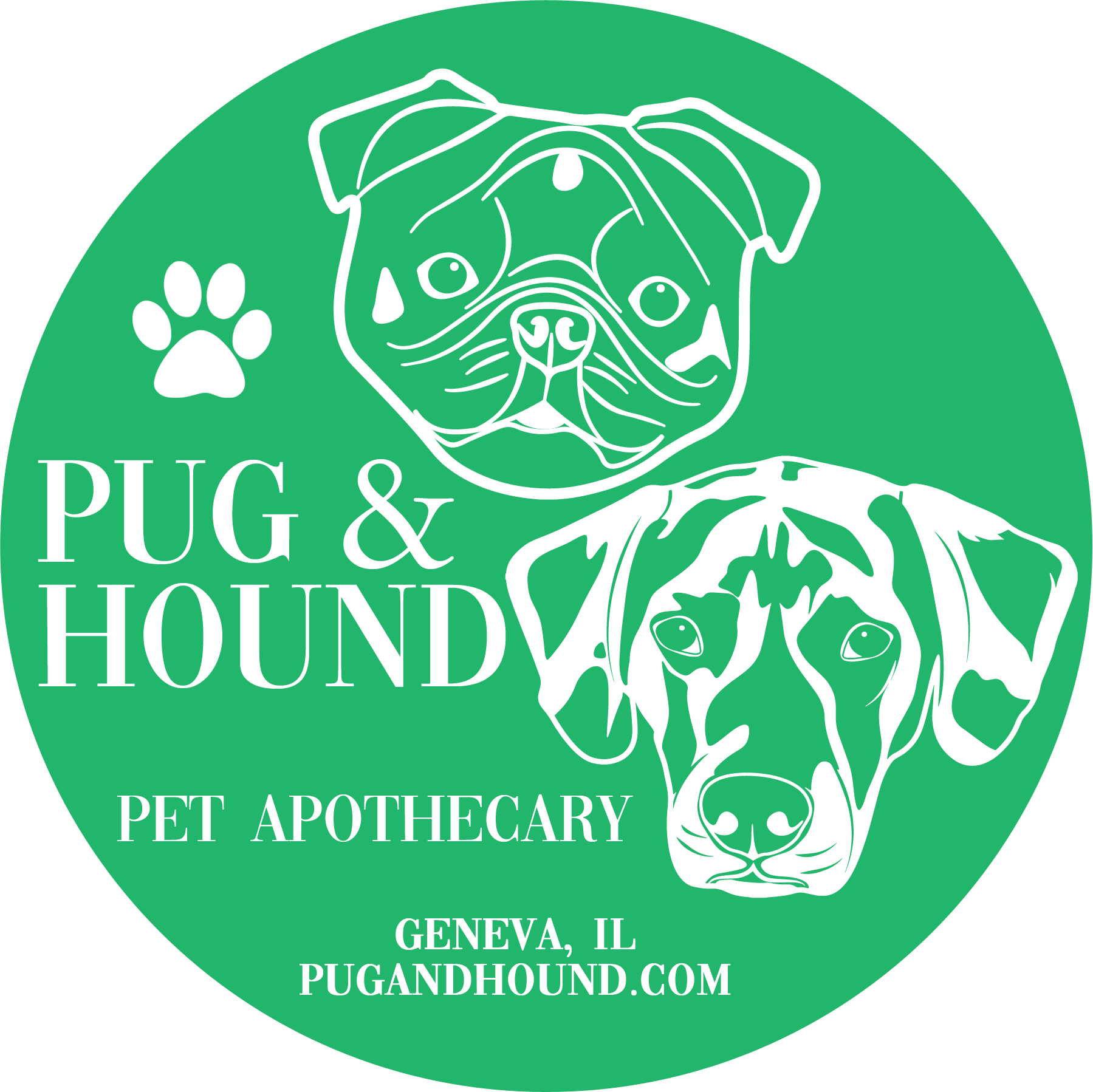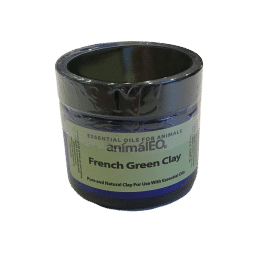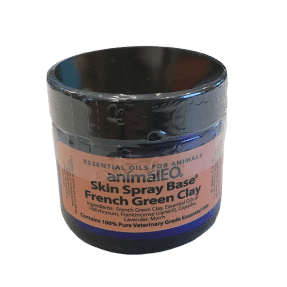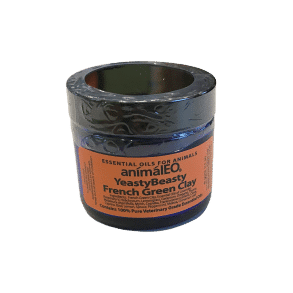French Green Clay (plain)
Ingredients: French Green Clay
Select French Green Clay to absorb unwanted essential oil applications, and as a safety tool when using essential oils.
Skin Spray Base Green Clay
Ingredients: French Green Clay, Skin Spray Base Essential Oil Blend
Select Skin Spray Base Green Clay to soothe and heal lesions, with moderate antibacterial and anti-fungal support.
YeastyBeasty Green Clay
Ingredients: French Green Clay, YeastyBeasty Essential Oil Blend
Select YeastyBeasty Green Clay to soothe and heal lesions, while providing strong antibacterial and anti-fungal support.
The must have POWER HOUSE from animalEO!
Maybe you have heard of French Green Clay. Maybe you have heard about it, but like me – just hadn’t realized how wonderful it truly is! In July of 2018 – I took a class from Caroline Ingraham on Zoopharmacognosy. While we practice our “aromatherapy” with quite a bit of differences – we still had a lot that could be learned from each other. And LEARN I did! Caroline has used plain French Green Clay for many, many years for a variety of conditions and uses. Naturally, my brain raced with all of the applications that I could see for this wondrous powder!
What IS French Green Clay?
Green Clay does not only have to be French. There are many sources of the powdered clay mineral including China, Montana and Wyoming. Green Clay is generally listed in the category of clay minerals known as illite clays. There are quite a lot of types of clay mineral powders – and they are NOT the same as Green Clay (Bentonite, Kaolinite, French Red Clay, etc…). Green Clay is indeed mined from deposits within the Earth – and then dried and crushed. Naturally there are better deposits from others, and Green Clays that contain more or less of the valuable ingredients which reach beyond just minerals. Within Green Clay we can find the remains of Kelp Seaweed and Algae – which give it its green color. There can be variable levels of these other nutrients and minerals – which make the quality of the Green Clay more desirable or more effective. In general, French Green Clay is thought of as the “gold standard” for Green Clay.
French Green Clay has been used in cosmetics, facial scrubs, masks, and soaps extensively. In ancient medicine, cultures used Green Clay to treat a variety of skin and gastrointestinal issues. When I was introduced to French Green Clay – my brain nearly exploded! Where had this wonderful powder been all my life? And why wasn’t I using it within Veterinary Aromatic Medicine!!!???
How do I love thee… Let me count the ways…
Here is a nutshell of what French Green Clay can do. It can dry weepy, moist wounds. It cools and soothes irritations on the skin. It can act as an antibacterial as well as an anti-fungal. It can absorb essential oils that are applied incorrectly to an animal, or absorb and relieve discomfort from an essential oil application that was a bit too aggressive or accidentally applied in an incorrect dose or manner. French Green Clay alone – is an amazing substance. It really should be on every veterinary shelf and available for every potential pet “poisoning” involving ANY topical substance in my opinion. I would LOVE to change the whole Pet Poison Control industry – and retrain them on how to act when an animal is inadvertently exposed to poor quality or excessive quantities and concentrations of essential oils or any other similar substance that needs to be absorbed and removed from an animal.
Using French Green Clay alone, was sure to be a new chapter to my veterinary career. But naturally, my brain ventures to other things. Other Aromatic things. Veterinary Aromatic Medicine things! We all know about carrier oils and their use with essential oils. If an inappropriate essential oil application occurs – we immediately say, “Apply some coconut oil” or “Apply some olive oil” or whatever fatty substance we can to dilute the application and presence of the essential oils. But, this does not remove the essential oil. It only dilutes it. The over-dosage if an over-dosage was applied – is still present and able to slowly be absorbed into the body. So while we may remove the topical direct skin irritation with a carrier oil – we DO NOT remove the actual amount of essential oil that has been applied and is still present on the body. When I have been contacted by worried veterinarians or animal guardians – I usually recommend a different “decontamination” process than the typical. Soap up the animal with a natural and organic shampoo – WITHOUT water first. This will bind to all of the essential oil first, then we can wash it away. But when most people suggest that an animal is bathed to remove a toxic substance – they will wet the animal down with water first. And for the most part, that water will be warm. Warm water will actually open pores and increase the circulation to the skin – creating a situation where the toxin could actually be absorbed MORE into the skin. And when we consider lipophillic substances (fat loving or fat soluble items), we know that oil and water do not mix. So…when we wet down an animal with warm water to decontaminate them – we also DRIVE that substance into the skin further. And our warm water we used – actually enhanced the entire process! OOPS! That is not a good thing! For the last few years, I have been trying to get the point across to soap an animal prior to wetting them – and then if possible, to use cool water to wash and rinse them with (to keep pores and circulation more closed). As you can imagine, a cold bath is even more fun for a cat than a warm bath!!!
Enter French Green Clay!
Have you ever witnessed vomit being cleaned up with a powdery type of substance? I know that sounds really gross – but it is a common thing that people understand. When a harmful substance is spilled, we often use materials that bind to that substance, and help to remove it. French Green Clay is a lot like this. Although, it is actually therapeutic in its own right as well! So, NOW I would fully suggest that any animal or human who is exposed to an undiluted essential oil or inappropriate use of an essential oil that causes some irritation or concern for “over dosage” – should use French Green Clay to “mop up” the situation – while also providing cooling comfort! Green Clay is really amazing!
But That’s Not All!
Plain French Green Clay is now be available through animalEO – as part of the proper expansion of Veterinary Aromatic Medicine. Some always have Fractionated Coconut Oil on hand when they use essential oils. However, I am going to urge you fully – to ALWAYS have some plain French Green Clay on hand if you deal with essential oils in ANY way, shape, or form! Like a carrier oil – this should be a staple when using essential oils (for humans or animals).
HOWEVER, just as we add many wonderful essential oils into a fatty carrier oil – we can add essential oils to French Green Clay to create an amazing and synergistic treatment! French Green Clay is not only a wonderful tool for safe use of essential oils, it is a therapeutic material in itself. And when this therapeutic mineral powder is mixed with essential oils – we actually get a synergistic action that is like no other!
Say you have a moist, yeasty ear infection in a dog. Not only is this itchy and uncomfortable, it can be hot and inflamed as well as riddled with yeast and/or bacteria. My veterinary brain jumped with joy at the thought of not only being able to soothe and dry an ear infection – but to add essential oils into this process, creating an amazing treatment dust! You likely know already that essential oils carry antibacterial, anti-fungal, anti-inflammatory, anti-viral, anti-tumoral properties and more! So to add essential oils to an amazing “carrier” such as French Green Clay – well I dare say this will be revolutionary!
Since July of 2018, I’ve been using French Green Clay – and French Green Clay mixed with essential oils extensively in veterinary cases. And I AM FLOORED! The stuff is amazing (if I do say so myself)! This is often used as a dry powder – and a clean make-up brush is the perfect way to apply animalEO Green Clay to an area of need. Just get a dusting on the brush, then dust onto the animal. Be careful of eyes of course – but dusting with the powdered brush inside the ears, in between toes, around vulvar folds, around an anus, inside lip folds (not with the same brush used to apply around the anus please!), in armpits, in groin areas, on bellies, on lick granulomas, at cast changes, under bandages…you name it! The only areas I am extremely cautious around are face folds near the eyes. I would be extremely careful to not get any powder with in the eyes – and it can be a dusty event to apply – so PLEASE USE CAUTION!
Again, the powder is supplied to you in the DRY form. It can be used dry, or in some cases water or even a carrier oil can be added to it to create a mask or poultice. Not all animals or application areas are great candidates for a mask, so it can take some thinking through. With the use of the dry Green Clays, there is a potential for dry skin to become “more dry” from an application – as it can and will suck moisture out of an area. So please be mindful and watch for any potential skin irritations caused by excessive drying. Stop use immediately if you see anything that looks like a potential problem. In our current use of the Green Clay – we literally have veterinarians raving about the results! We are excited to bring this opportunity for health and healing to you! The plain French Green Clay, Skin Spray Base Green Clay, and YeastyBeasty Green Clay are currently available for purchase, with even more formulations coming late 2022!




Reviews
There are no reviews yet.